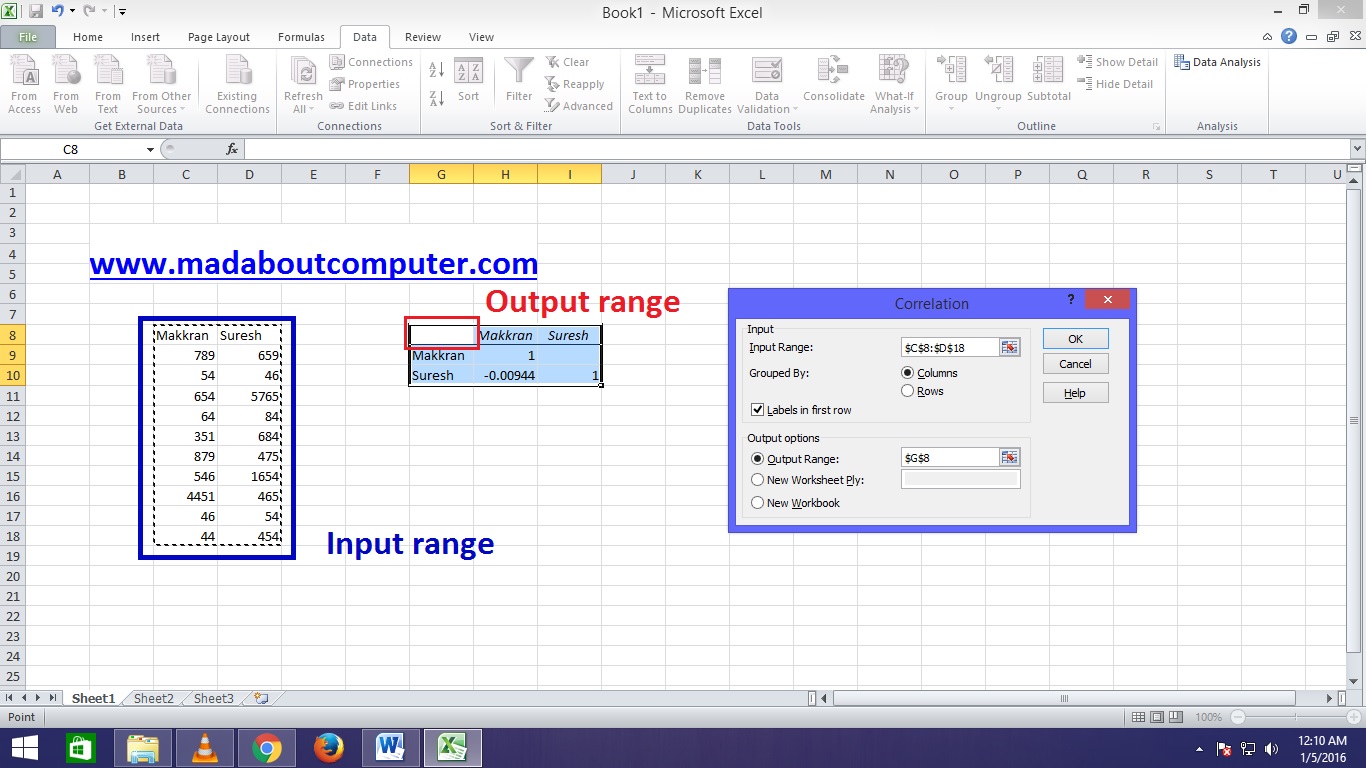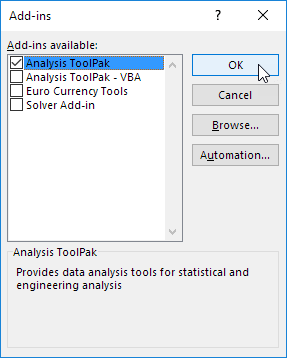
It does not matter which one you use (uppercase or lowercase) as it will automatically be converted to the correct one.Īll the Analysis-ToolPak functions will return a valid error value if they are passed the incorrect parameters. If you have both the "Analysis-ToolPak" add-in and the "Analysis-ToolPak - VBA" addin installed, you will see duplicate functions appear in the (Insert > Function) dialog box.
#Load analysis toolpak excel 2016 full#
If you are going to qualify the function then the square brackets are needed as the library name contains a full stop. This will allow the functions to be called without any prefix, although including a reference to the file reminds people that the function is defined in a separate file. This can be done by selecting (Tools > References) within the Visual Basic Editor. You can alternatively add an explicit reference to the "atpvbaen.xls" file. The parameters passed in MUST ALWAYS be range objects and not just strings containing a range

Call Msgbox(Application.Run("atpvbaen.xla!Complex",3,3)) = 3+3i You can also call these functions using the Application.Run("Function Name","Parameters") syntax although this is only available for backwards compatibility. These functions can be called in exactly the same way as the regular worksheet functions. If you are using Excel 2003, change the filename to "atpvbaen.xla". Application.Run "atpvbaen.xlam!Histogram", _ You can use the macro recorder to help pass in the correct parameters. This add-in actually just provides the interface for the "ANALY32.XLL" file and both these files can be found in the following folders:Įxcel 365 - C:\Program Files\Microsoft Office\Office16\Library\Analysis\Įxcel 2021 - C:\Program Files\Microsoft Office\Office16\Library\Analysis\Įxcel 2019 - C:\Program Files\Microsoft Office\Office16\Library\Analysis\Įxcel 2016 - C:\Program Files\Microsoft Office\Office15\Library\Analysis\ When the "Analysis-ToolPak - VBA" add-in is installed you will see an additional project in your project window called "ATPVBAEN.XLAM". You will receive a "Type Mismatch" error otherwise.

You must also have the "Analysis-ToolPak" add-in installed in order for this to work. You must have the "Analysis-ToolPak - VBA" add-in installed if you want to use any of the extra worksheet functions from your VBA code. it applies to Excel 2013 and Excel 2016.When the "Analysis-ToolPak" add-in is installed you will see an additional project in your project window called "FUNCRES.XLAM". See Microsoft documentation for more information. Quick Analysis is a similar set of tools available in Excel 2013. The button will open the Data Analysis dialog, which offers access to a variety of analysis tools. Go back to the first screenshot in the instructions to see how it will look. Once the add in has been successfully installed you will see data analysis when you click on the data tab (usually to the far right of the toolbar).
#Load analysis toolpak excel 2016 install#
If you are prompted that the Analysis ToolPak is not currently installed on your computer, click Yes to install it. Tip: If Analysis ToolPak is not listed in the Add-Ins available box, click Browse to locate it.

If the Data Analysis command is not available in your version of Excel, you need to load the Analysis ToolPak add-in program.


 0 kommentar(er)
0 kommentar(er)
